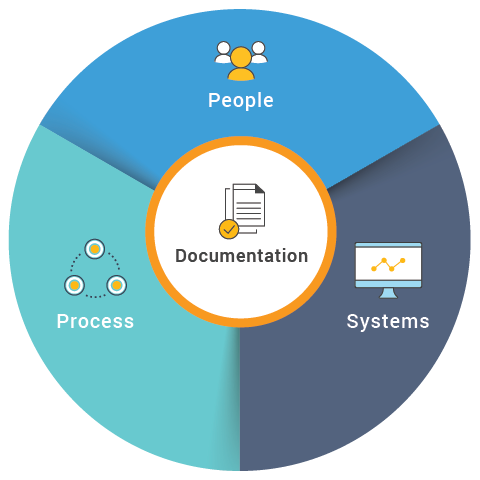Supporting Regulatory Transformation with Change Management at Veeva R&D and Quality Summit Connect
One of the keys to successful regulatory transformation is strong change management, both during system implementation and post-deployment. When done in the right way, change management can help drive user adoption, cement new processes, and support continuous improvement. At the recent Veeva R&D and Quality Summit Connect, panelists from three innovative organizations discussed how they utilize change management to deliver impactful business outcomes.
Changing Roles and Responsibilities
First, it’s important to note that change management does not only concern system implementation, but it also encompasses how people adapt to new roles and responsibilities. Angela Amato, Regulatory Affairs Manager at IBSA Group, spoke about how her company established a dedicated team of business administrators to aid their Vault RIM transition. These users are responsible for master data, templates, metadata, and submission planning plus they manage important daily business operations and train others on the system. After new Vault releases, the business administrators assess where and when processes need to be improved to comply with regulatory requirements. As Amato described, “This ensures that all regulatory users can focus on their regulatory activities and projects by using the system for creating, updating, and reviewing documents within planned submission timelines.”
Similarly, Kirsten Moe, Regulatory Process & Data Owner for Global Regulatory Operations at UCB, described how her organization deploys expert users in each functional area to help answer questions. For example, if a CMC author has an issue then they go to an expert in their group that uses Vault RIM every day. If the expert is unable to solve the issue then they’ll escalate it to UCB’s centralized support.
Rune Bergendorff, Vice President at NNIT, added that he’s seeing companies use a different mix of roles to incorporate updates after go-live. This isn’t just an IT task, so organizations need to involve business stakeholders to continuously evaluate new features. That way they can get the greatest benefit out of each release as business priorities evolve.
Incorporating New Processes
Another key aspect of change management is evolving processes to keep up with new functionality. UCB communicates frequently with their Veeva counterparts to prioritize new functionality so they can strike a balance between proactive and reactive changes. When UCB identifies a business case for functionality not yet available in Vault RIM, they communicate the enhancement request to their Customer Success Manager and ask things like, “What are other customers doing? What are your recommendations? What’s on the roadmap?”. Once they implement a change, UCB is careful to only communicate it to relevant users, so they don’t overwhelm everyone with notifications.
NNIT also sees advantages in consistently updating processes when adopting a new RIM solution. After the first year of deployment, the system may look very different than when it first went live and that’s even more true in years two and three. If organizations regularly assess their processes during product release cycles, then they’ll be better positioned for success.

Streamlining Validation and Documentation
In addition to people and processes, organizations should also consider how they’ll validate and document system upgrades as part of their change management approach. NNIT highlighted the importance of building in time for performance qualifications and user-acceptance tests in order to keep projects on track. Automated testing can also help expedite some of the more tedious tasks like testing the same use cases across multiple roles, and that will free up business administrators to spend time on more critical functionality.
When it comes to documentation, UCB exercises strict control over their high-level SOPs, but they have more flexibility with training documents, which are smaller modules that can be easily revised with the latest process details following an internal approval process. Rune Bergendorff echoed this strategy, “We need bite-sized training in small videos, small interactions, just two or three minutes, because you need to be able to maintain it and make it simple to update.”
To maximize the value of a Vault RIM implementation, companies must plan for these organizational and process changes alongside their technical go-live. Doing so will not only improve system adoption, but it will also help build a strong foundation for the future.
If you’d like to hear more change management recommendations from IBSA Group, UCB, and NNIT, watch the full session recording here.

